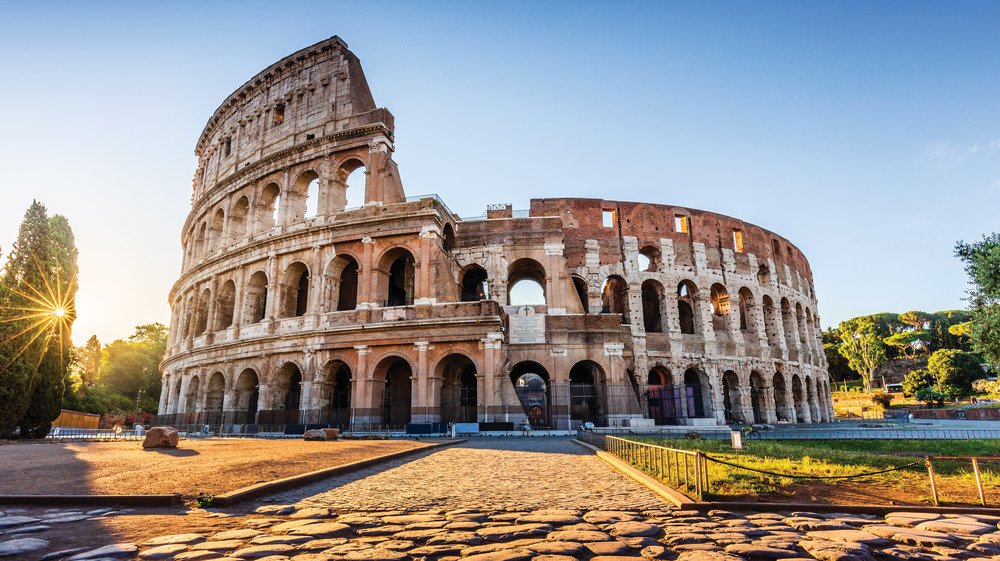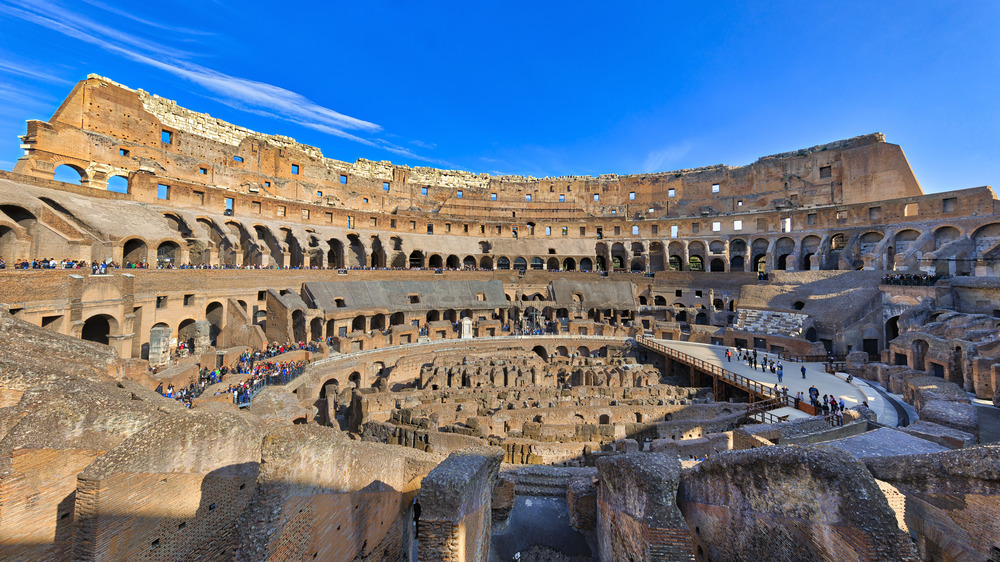The Real Reason The Roman Colosseum Was Built
If you get on a tour bus in Rome, there is no escaping the Roman Colosseum. In fact, it's one of Italy's most trafficked tourist attractions with millions of visitors each year (okay, maybe not in 2020), despite two-thirds of it being destroyed. Construction began on this most famous of amphitheaters at the height of the Roman Empire, sometime between A.D. 70 and 72. The massive 620 by 513 feet amphitheater was an undertaking of the emperor Vespasian of the Flavian dynasty. The Colosseum was said to be a gift from the Flavian emperors to the Roman people following more than a decade of Emperor Nero's misrule and excesses, which fueled a series of civil wars.
The Flavian emperors, as Vespasian and his sons Titus (79-81) and Domitian (81-96) were known, attempted to tone down the excesses of the Roman court, restore Senate authority, and promote public welfare — all of which suffered under Nero, who took his own life in A.D. 68. The initiatives of the Flavian emperors were meant to be a corrective, including constructing the Colosseum over Nero's palace, the Domus Aurea ("House of Gold"), according to Interesting Engineering.
The Colosseum opens with gladiator games
The Colosseum opened after nearly a decade of construction. The four-story structure included 80 entrances — 76 for the patrons, two for participants, and two exclusively for the emperor — to accommodate the 50,000-80,000-seat audience. Upon opening, Titus celebrated with 100 days of games, including gladiatorial combats and wild animal fights. The Colosseum also hosted battle reenactments, dramas, and even some public executions.
However, over the course of four centuries, Roman interest in the games dissipated. After the fall of the Western Roman Empire in A.D. 476, the Colosseum began to deteriorate. A series of earthquakes during the fifth century A.D. damaged the structure, and it suffered from neglect. The Colosseum was also used as a quarry for building projects such the cathedrals of St. Peter and St. John Lateran as well as the Palazzo Venezia, according to History.
It wasn't until the beginning of the 18th century that any conservation attempt was made, when popes sought to protect the Colosseum as a sacred Christian site. They argued the arena needed to be preserved because early Christian martyrs met their fate in the Colosseum, although that had not been proved. A more serious restoration project began in the 1990s to repair the Colosseum. Since the work started, significant archaeological discoveries have been made, including one of the first sewage and drinking fountain systems, according to Interesting Engineering.

